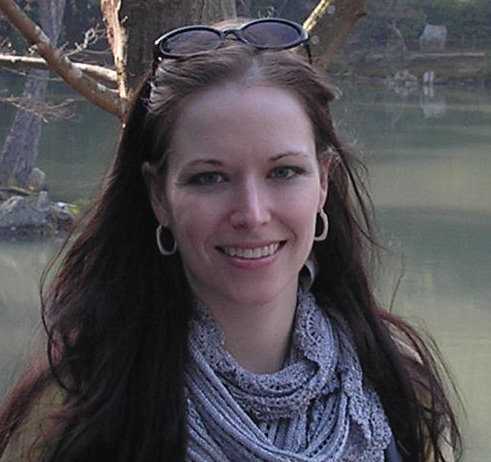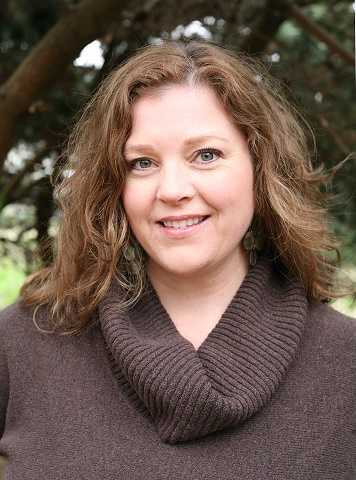In our weekly feature section, Pelvic Rehab Report is proud to present this interview with Herman & Wallace instructor Allison Ariail, PT, DPT, CLT-LANA, PRPC, BCB-PMD

How did you get started in pelvic rehab?
I got started in pelvic rehab by treating and specializing in SIJ and low back dysfunction. I used ultrasound imaging to retrain the local core muscles including the transverse abdominis, lumbar multifidus, and the pelvic floor muscles. In treating these patients, not only did they improve with respects to their back pain, but their incontinence improved as well! I then started getting referrals from doctors for incontinence patients. So I took PF1 and as they say, the rest is history! I know that pelvic rehab is my calling. I am impassioned about this subject and love treating these patients. I also thoroughly enjoy teaching about the pelvic floor and the pelvic ring. I truly feel I am one of the lucky ones to actually love what I do!
What do you find most rewarding about treating this patient population?
I am passionate about treating this patient population because it makes such a difference in their lives! I have had more patients than I like to admit say that if they did not find me and get on my schedule, they would have killed themselves due to their pain. This is so sad and alarming to me that individuals have gotten to the point of considering those thoughts. I feel blessed that I am in a position to not only improve their lives in the physical sense but also in the emotional one by lessoning their pain and improving their outlook on life! To me there is nothing more rewarding than seeing this dramatic of a change in a patient.
What do you find most rewarding about teaching?
One reason I love teaching is because it is a way to help improve the lives of more people suffering with pelvic disorders! There are not enough therapists that specialize in the pelvic floor and by teaching other therapists how to appropriately treat pelvic floor dysfunction, it positively impacts more people’s lives! I always find it magical when a course participant is hesitant and nervous to take the course. Then after the course they are excited and enthusiastic to treat this patient population and to learn more about this field. This is very rewarding to me and a reason I look forward to teaching each and every course.
If you could get a message to all therapists about pelvic rehab, what would it be?
One message I would try to get out to therapists about pelvic rehab is to get out and talk about it! Discuss what you do with physicians, the community, as well as people you meet in every day life. Often, when someone finds out what you do, you will get questions asked of you. However, don’t wait for this! There are so many women and men suffering in silence thinking that there is nothing they can do. So get out there and tell them what you do and how you can help can improve lives! Don’t be hesitant or shy, be energetic and excited to share your knowledge and educate the public about what we do as pelvic therapists!
In our weekly feature section, Pelvic Rehab Report is proud to present this interview with Herman & Wallace instructor Peter Philip, PT, ScD, COMT, PRPC

How did you get started in pelvic rehab?
While treating an MD, OB-GYN, he asked me a question regarding a patient that he was treating that was suffering from dyspareunia. I’d just completed my Master's in orthopedic physical therapy and realized that there was an entire section of the body that was "full of muscles, ligaments and nerves” of which I had virtually no knowledge. This bothered me, so I began my own independent research, study and application of skills learned through continuing education, and application of what are typically considered to be ‘orthopedic’ techniques to the pelvic pain/dysfunction population. To my (continued) wonderment, the patients responded exceptionally well, and efficiently.
Who or what inspired you?
Dr. Russell Woodman and Dr. Holly Herman have provided me with the foundational skills and motivation to help and heal those patients suffering.
What have you found most rewarding in treating this patient population?
Many patients have suffered for years prior to ‘finding’ me. Many are despondent, and have given up hope for a cure; resigning themselves to a life of pain. Providing the means of restoring comfort and wellness is gratifying, rewarding and quite frankly, humbling. What an honor it is to help those that suffer regain the life that they thought they’ve lost.
What do you find more rewarding about teaching?
Having the opportunity to assist clinicians (MDs, PTs, DCs) more effectively, efficiently evaluate and treat their patients provides me with the same gratification that treating the patients myself. This, in addition to being able to help those that have not been helped attain their wellness and health they’ve been seeking, often for years.
What was it like the first time you taught a course to a group of therapists?
The first course I taught was in NYC. The air conditioning was broken, and the office had a few, small windows. The ambient temperature was upper nineties, and no breeze. Through the tortuous temperatures, and ‘first time jitters’ I persevered, and the staff were incredible hosts and provided me with guidance that I appreciate to this day!
What trends/changes are you finding in the field of pelvic rehab?
Manual medicine and non-surgical interventions are being more recognized as very viable means to address, and eliminate pain while improving biomechanics and function. Medical practitioners from all fields are consulting with specialists in the field of pelvic pain to better address their patients' suffering. We are at the forefront of interventional treatments, and patients are seeking effective means to eradicate their pain and dysfunction.
If you could get a message to all therapists about pelvic rehab, what would it be?
Review, re-read, re-learn all the anatomy, neuroanatomy, kinematics and never forget to think, think, think.
In our weekly feature section, Pelvic Rehab Report is proud to present this interview with Herman & Wallace instructor Michelle Lyons, PT, MISCP

How did you get started in pelvic rehab?
Like a lot of therapists whom I talk to when I travel and teach, it was after the birth of my daughter, when I realized what an under-served population postpartum women are! After childbirth, the focus almost entirely shifts to the baby, and poor old Mum is left, by and large, to fend for herself. Now, more than ever, when we are looking at shorter hospital stays and the lack of maternity leave, we as pelvic therapists need to grow awareness of the needs of women throughout the life cycle and what we have to offer. Pelvic rehab is a high touch, low risk, cost effective and highly effective (yet under used) treatment option. I am passionate about spreading the Pelvic Rehab Gospel!
Who or what inspired you?
Holly Herman. The woman is a pelvic legend. If you get the chance to take one of her course, do it. An amazing breadth, width and depth of expertise and experience.
What do you find more rewarding about teaching?
Confession: I am a pelvic nerd. I just love talking about the fascinating interplay of anatomy, physiology, psychology, form and function. I am (almost) never happier than when I get to spend a weekend with a group of therapists exploring diagnoses, assessments, interventions and outcomes with a like minded group of pelvic health professionals. Whenever I teach, I always learn something too – I really like the classes I teach to be conversational and we tend to have some interesting sidebars and tangents! But I think that just adds to the learning experience – we have all had different pathways educationally, personally and professionally, and I think that looking at different perspectives and approaches can only be a good thing, especially for the patients we treat.
How did you get started teaching pelvic rehab?
My background was in sports medicine and MSK dysfunction. I come into the wonderful world of pelvic health about 15 years ago. Now I look on that background as being incredibly important – I think in order to be a great pelvic therapist, you really need a solid orthopedic expertise. You can’t treat the pelvic floor without looking at the pelvic girdle (and spine and hips and feet and …..!)
What trends/changes are you finding in the field of pelvic rehab?
I think we are learning more and more about Pain Science – sometimes on a daily basis. I think one of our primary role as pelvic therapists can be as educator – I often say to classes that most people know more about their phones than they do about their own bodies! So having anatomical models, books and learning aids can be a great way to empower our patients. I always emphasize including biopsychosocial approaches in working with patients, talking about issues like central sensitisation, the effects of chronic pain and worry on the brain etc BUT I do think we have to be careful, too, that we don’t ignore the biomedical. Sometimes I worry that the pendulum is swinging too far – we have to be sure that we are addressing the physical problems as well!
The other big trend I see is engagement on social media! Just over a year ago, after I taught a course in the UK, I set up a Facebook group with my friend & colleague, Gerard Greene, called Women’s Health Physiotherapy. We now have over 2300 members from all over the world and it is so heartening to see international colleagues from the US, the UK, Australia, the Middle East and Ireland talking, sharing ideas, questions, resources and clinical reasoning. So reassuring to know that others have dealt with the same problems we may be facing in our daily patient caseloads! The Facebook group has been a great success and in fact we submitted a poster based on the group looking at how SoMe can benefit physiotherapists internationally and it has been accepted for presentation at WCPT in Singapore in May.
If you could get a message to all therapists about pelvic rehab, what would it be?
You have such an amazing skillset – you have the power to effect HUGE change in your patients’ lives. The CSP (the governing body for Physiotherapists in the UK) acknowledges that pelvic health is one of the few growth areas within our profession. I think as pelvic therapists, we have the ability to integrate gynaecological, obstetric, orthopaedic, hormonal, oncological and biopsychosocial systems. We are skilled interviewers, skilled manual therapists and skilled exercise/lifestyle precribers. We have the ability to take our patients from being passive recipients to active participants in their own healthcare. It is the best job in the world!
If you could make a significant change to the field of pelvic rehab or the field of PT, what would it be?
I would love to see our role more widely understood and acknowledged. Most of our medical colleagues don’t know what we do! The other big change I would love to see in the U.S. is national registration – I hear from so many therapists how restrictive individual state licensure is and how it can hold them back from job opportunities. I do understand that this is an issue that is hopefully on the horizon, and I think that will be a huge boost to our profession!
What have you learned over the years that has been most valuable to you? Never stop learning! There are always more books to buy, articles to read and courses to attend, but it is just as important to take time to assimilate new knowledge and always ask yourself – ‘Does this change how I would practise? How? Why?' Got to love that clinical reasoning skill set!!
What is your favorite topic about which you teach?
So….this is a tricky one! I teach the Pelvic Floor series and the Pregnancy series. I have developed a number of specialty topics for Herman & Wallace over the years – The Athlete & the Pelvic Floor, Menopause – a rehab approach, Special Topics – Endometriosis, Infertility & Hysterectomy and Oncology & the Male Pelvic Floor and Oncology & the Female Pelvic Floor. To pick just one is impossible! I truly love teaching them all, but if I had to narrow it down I would have to have joint winners. PF1 because I really see this course as the ‘gateway drug’ to a career in pelvic health – I just love to watch as participants move from that first scary lab session (!) to the end of Day 3 and feeling of ‘Yes! I get this! I love pelvic rehab!’. The other joint winner would have to be Oncology & the Female Pelvic Floor – we have so much to offer the survivors of gynaecological cancers. However, unlike our well publicized and relatively well researched role in prostate cancer rehab, gynae cancer survivors are often left to deal with problems encompassing orthopedic, soft tissue, lymphatic, sexual and continence function issues. We have work to do in raising our profile in cancer survivor-ship programs for these women. So, talking about the effects of cancer and cancer treatment on life with and after cancer is an issue I feel very strongly about.
In our weekly feature section, Pelvic Rehab Report is proud to present this interview with Herman & Wallace instructor Jennafer Vande Vegte, MSPT, BCB-PMD, PRPC

How did you get started in pelvic rehab?
A supervisor of mine suggested that I go to a course and develop a pelvic floor program. I thought she was nuts. As a late twenty-something, I wanted to work with athletes. Finally she convinced me to go. Imagine my surprise when I felt like a duck in the water in the Pelvic Floor Level 1 class.
Who or what inspired you?
Truly I was smitten by Holly Herman at PF1. Her unique teaching style combining her incredible knowledge and fascinating stories with compassion and clarity is something to behold. Later I met Kathe at PF2A and was so inspired by both of these amazing women.
What have you found most rewarding in treating this patient population?
It is such an honor and a privilege to do what we do. At times we share a facet of our patients lives that even their spouses or best friends don't know about. It is not rare for someone to tell me, "I've never told anyone that before." Being trusted to share in these private experiences with others is a blessing to me.
What do you find more rewarding about teaching?
That's easy! I love the "ah-ha" moment when the light comes on in someone's eyes. When they "get it", whether it's finding the ATLA for the first time or understand another treatment direction for a complex patient, this is the moment that I love. I also treasure being around other people who love to do what I love to do!
How did you get started teaching pelvic rehab?
My hospital hosted the PF series years ago and I got to TA. I invited Holly and Kathe out to dinner and basically begged them to think of me if they ever had a teaching position open. Luckily the company was growing and I was shocked to have an opportunity to teach PF2B within a year. I was thinking maybe in 5 years, but I jumped at the chance.
What was it like the first time you taught a course to a group of therapists?
I was SO nervous. I studied like crazy for 6 months! I thought I did a horrible job until I read the reviews at the end of the course and realized I did okay.
What trends/changes are you finding in the field of pelvic rehab?
The amount of knowledge and research in our field is exploding. There are amazing blogs and recourses online for both patients and therapists to get information. Patients are coming in much more educated. Doctors seem to be getting the message that pelvic floor PT is a good first line option for their patients.
If you could get a message to all therapists about pelvic rehab, what would it be?
Every therapist should know a pelvic floor therapist and know when a consult would be appropriate. All therapists should try to feel more comfortable asking appropriate patients about elimination and sex.
If you could make a significant change to the field of pelvic rehab or the field of PT, what would it be?
I would love to see more of a team approach between physicians, PTs, therapists, pain clinics, nutritionalist, etc. especially in treating complex pelvic pain.
What have you learned over the years that has been most valuable to you?
Oh so much. Listen to your patient and hear what he or she or he is telling you. Don't feel like you have to have everything figured out on the initial evaluation. Treat what you find and continue to evaluate and listen.
What is your favorite topic about which you teach?
I think it changes each time, but right now I am really interested in relaxation techniques and down training especially as we understand more about the brain's involvement in pain responses.
In our weekly feature section, Pelvic Rehab Report is proud to present this interview with Herman & Wallace instructor Holly Tanner PT, DPT, MA, OCS, WCS, PRPC, LMP, BCB-PMB, CCI

How did you get started in pelvic rehab?
I joined Apple Physical Therapy as an orthopedic outpatient clinic manager back in 2000. The previous manager had begun treating women who had urinary incontinence and we had this (huge) old biofeedback unit. I told the company owners that I would be willing to take a course in treating urinary incontinence, which I quickly did. I also quickly learned that to do a great job in pelvic rehab, and to serve the patients well, you need to keep taking classes to learn about all the other issues that make pelvic rehab so potentially complex and engaging.
What have you found most rewarding in treating this patient population?
The fact that patients are so trusting and share their most intimate issues that may be difficult to discuss. Patients with pelvic dysfunction are so profoundly grateful for the help they receive, and that in turn inspires me to want to be helpful.
What do you find most rewarding about teaching?
I love providing a groundwork upon which the therapists can build through their own practices and through other coursework and knowledge they bring to the table. There is never one approach or one course that can provide an answer for each patient, and as an instructor for Herman & Wallace, I have the privilege of standing on the platform that Holly Herman and Kathe Wallace established when they founded the Institute. I feel that I get to fast-track the therapists by sharing what I have learned through experience and all the training that I have received, and then they can keep expanding the knowledge and skills within our field. I also learn a lot myself through the generosity of the therapists who bring their knowledge and experience to the courses.
If you could get a message to all therapists about pelvic rehab, what would it be?
Shadow a pelvic rehab therapist for half a day. That's all it will take to see the world that opens up in front of you, to feel inspired by the amount of issues that go "missing" and how to address them, and also how to notice how simple and meaningful it is to offer some guidance or hope to a patient who has pelvic dysfunction.
If you could make a significant change to the field of pelvic rehab or the field of PT, what would it be?
Now that more therapists are joining the ranks of pelvic rehab, I hope that we see more of them move into treating men and children. As Dawn Sandalcidi (who teaches about pediatrics for the Institute) shares with us, many of the pelvic dysfunctions start in childhood, and we must get to the kids as soon as possible.
What is your favorite topic about which you teach?
My favorite condition to treat and lecture about is definitely scrotal pain. There is such a paucity of awareness about the potential causes of scrotal or testicular pain, and men have been suffering way too long when they have this issue. In my experience, men can respond very quickly and completely with intervention.







































